JEWISH MUSEUM BERLIN
Megan Carruzzo with a nonarchitect guest
Year: 2001
Location: Berlin
Architect: Daniel Libeskind
INTUITION
INTENTION
IMAGINATION
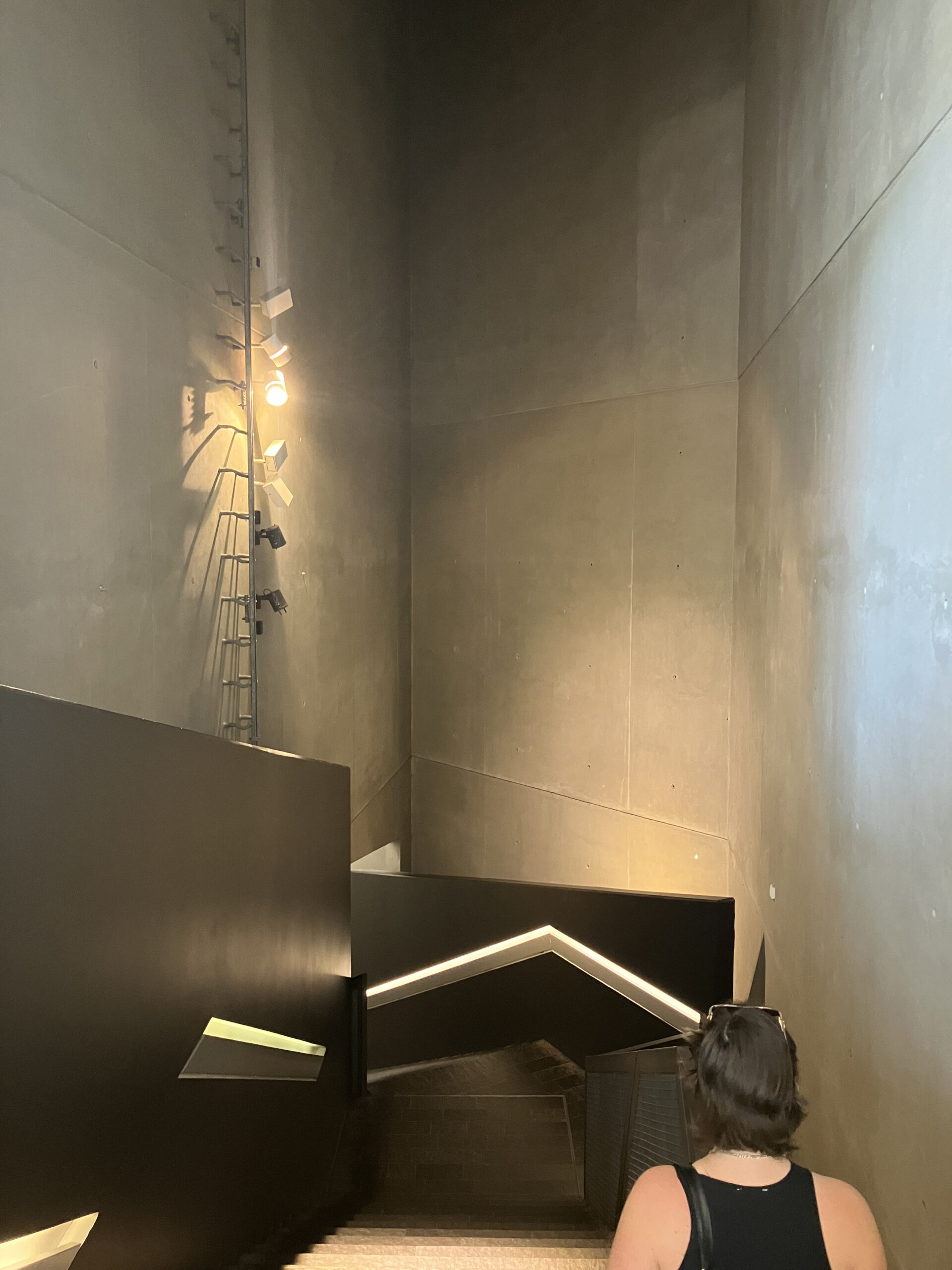
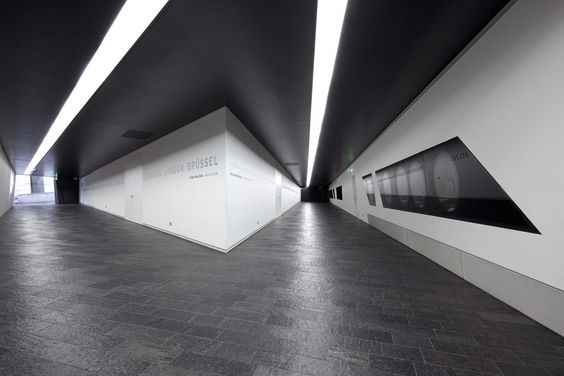
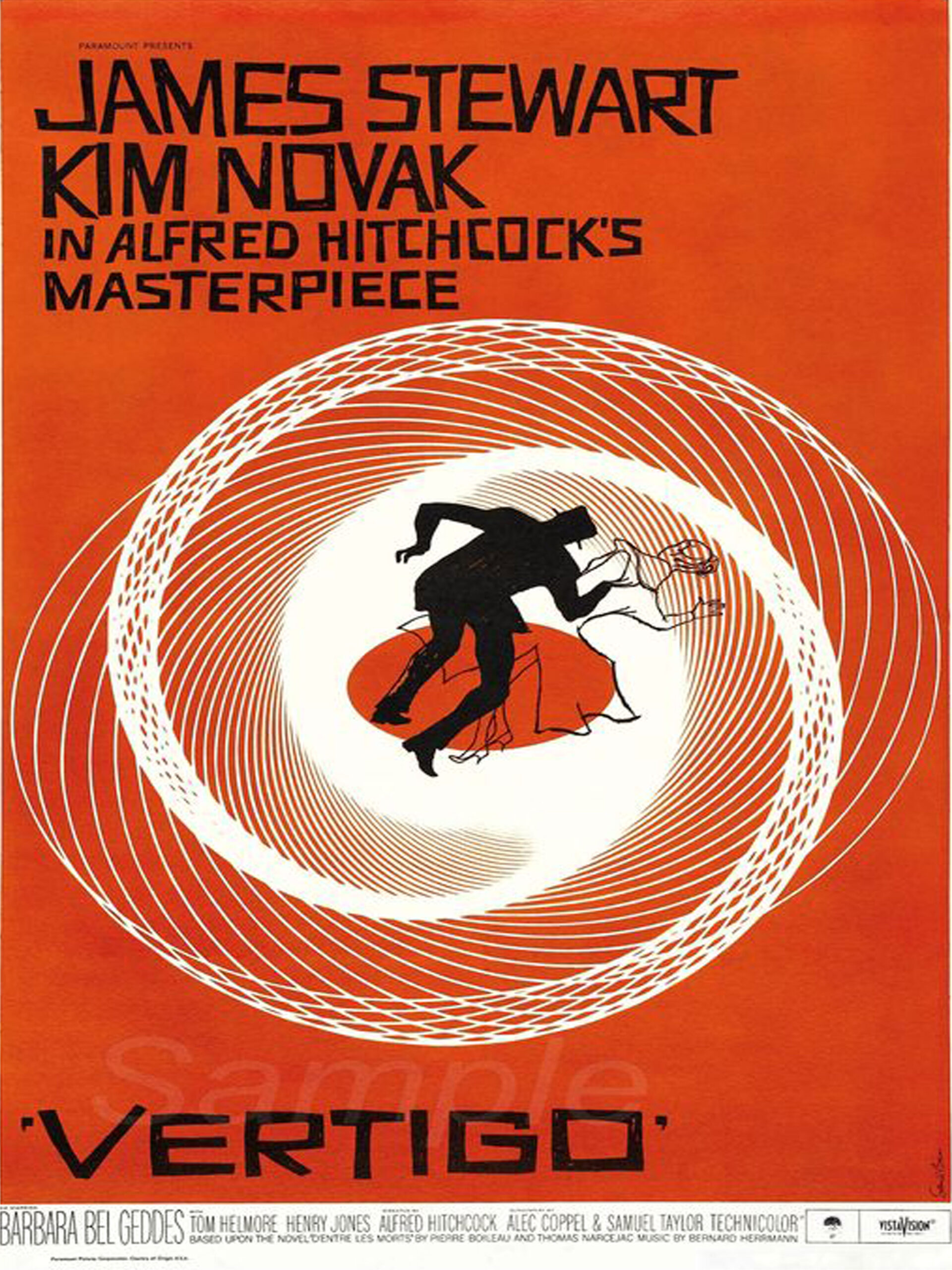
DESTABILIZED
I N T E R V I E W
“The axes are way more important than what is in the windows, and I don’t feel like relishing what’s on the walls. I just want to move forward in the corridors. The first floors and windows are really high, you feel like you’re like you’re locked in a hole. The feeling of never being able to come out, as if the hole was infinitely long. It also attacks the other senses, and the noise takes up so much space that you feel like you’re in a little bubble. The ray of light draws me to the bottom and push me to go straight to the garden of exil.
It makes you feel like you’re going around in circles. You find yourself because the space is big. There are lots of angles, but we still have the impression of just going around. You feel locked in the spiral of the room.”
ACUTE
The walls and floors in the basement are not straight. Sharp angles, slopes and uneven surfaces create a disorienting physical experience. This unconventional architecture is intended to disrupt perception and evoke a sense of unease and confusion. Moreover, the symbolic
aspects also contribute to this destabilization. Each piece and historical element plunges visitors into the sad past.
VERTIGO EFFECT
The vertigo effect, introduced by Alfred Hitchcock, is a unique cinematic technique aimed at creating a sensation of vertigo and disorientation in the spectators.
Applied to corridors, this effect gives the illusion that they are very long and gradually lengthen. The perspectives are transformed, the angles become more pronounced, thus amplifying the effect of destabilization and enlargement of the space on the screen.
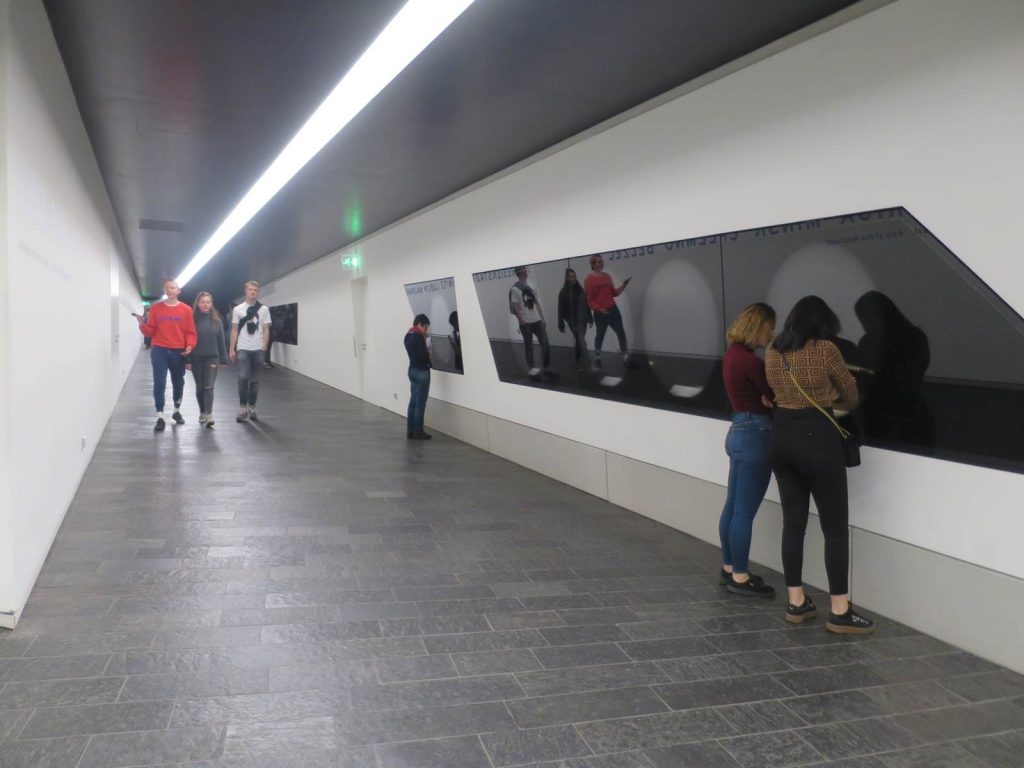
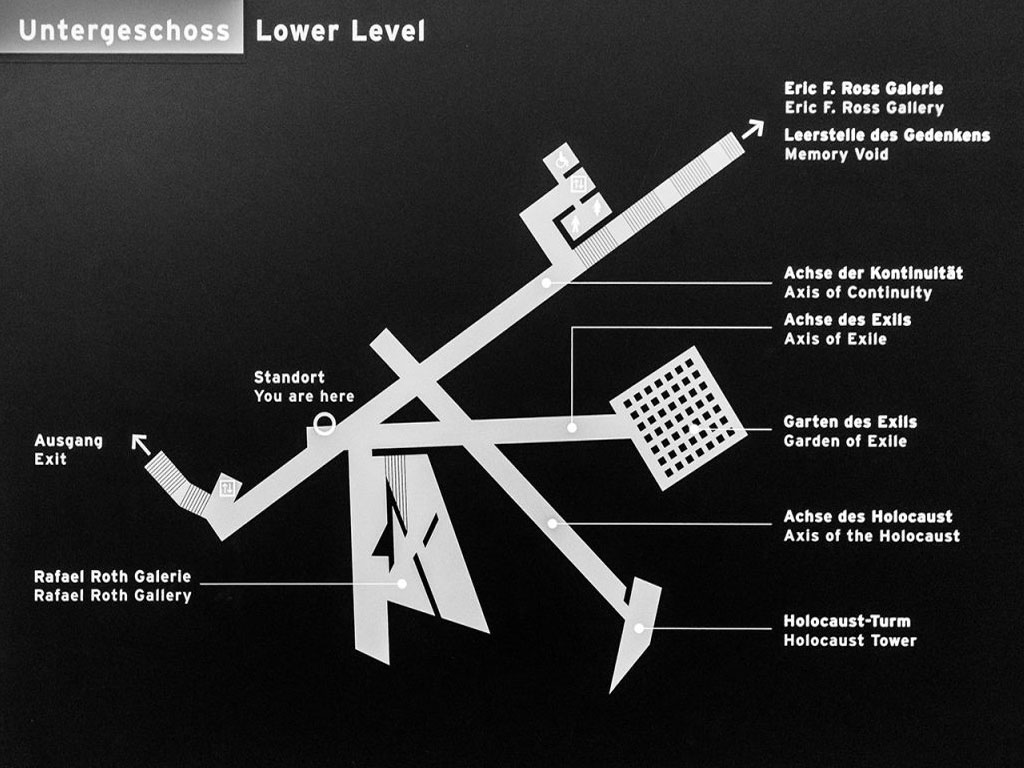
INTUITION
INTENTION
IMAGINATION
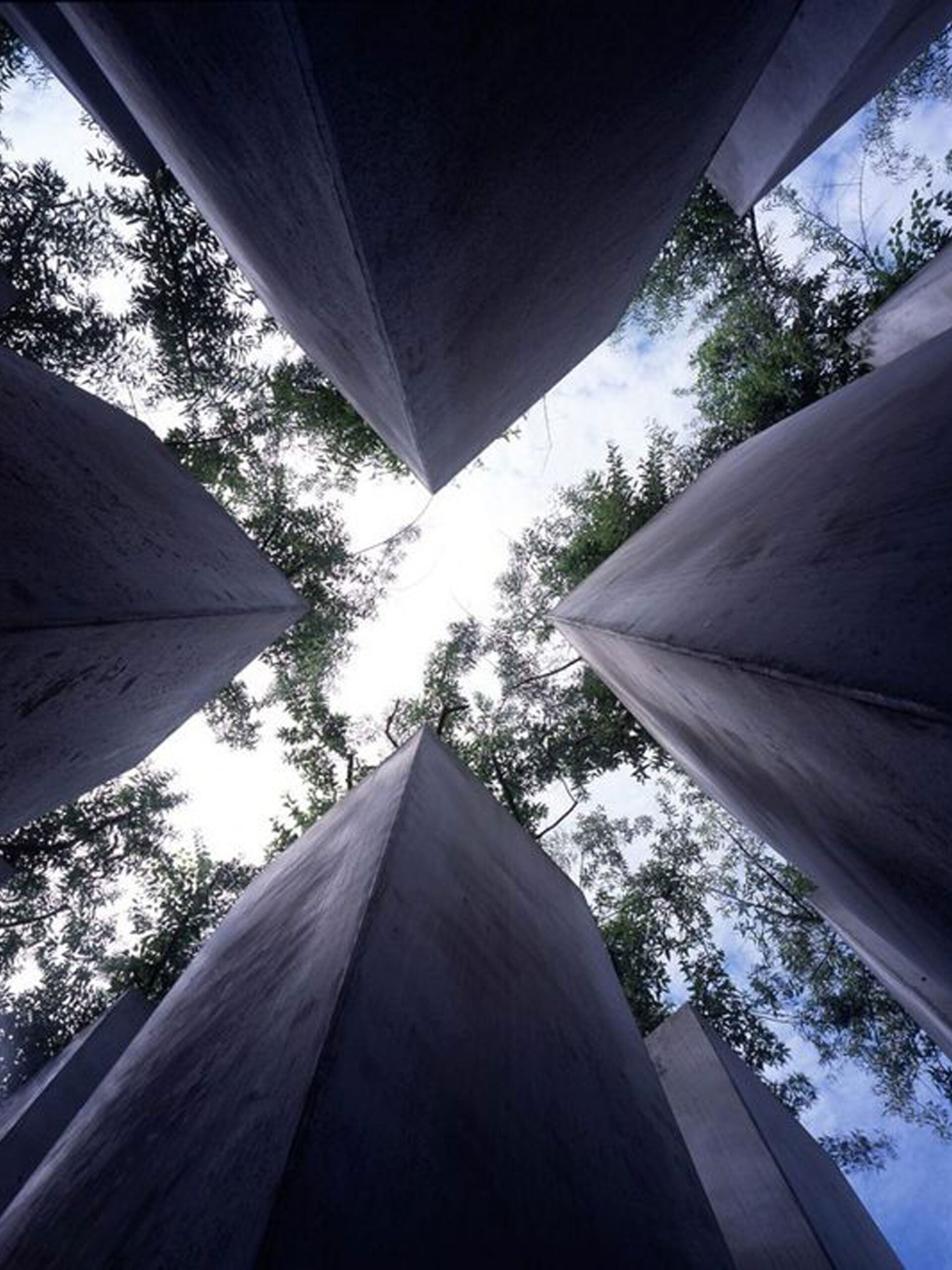
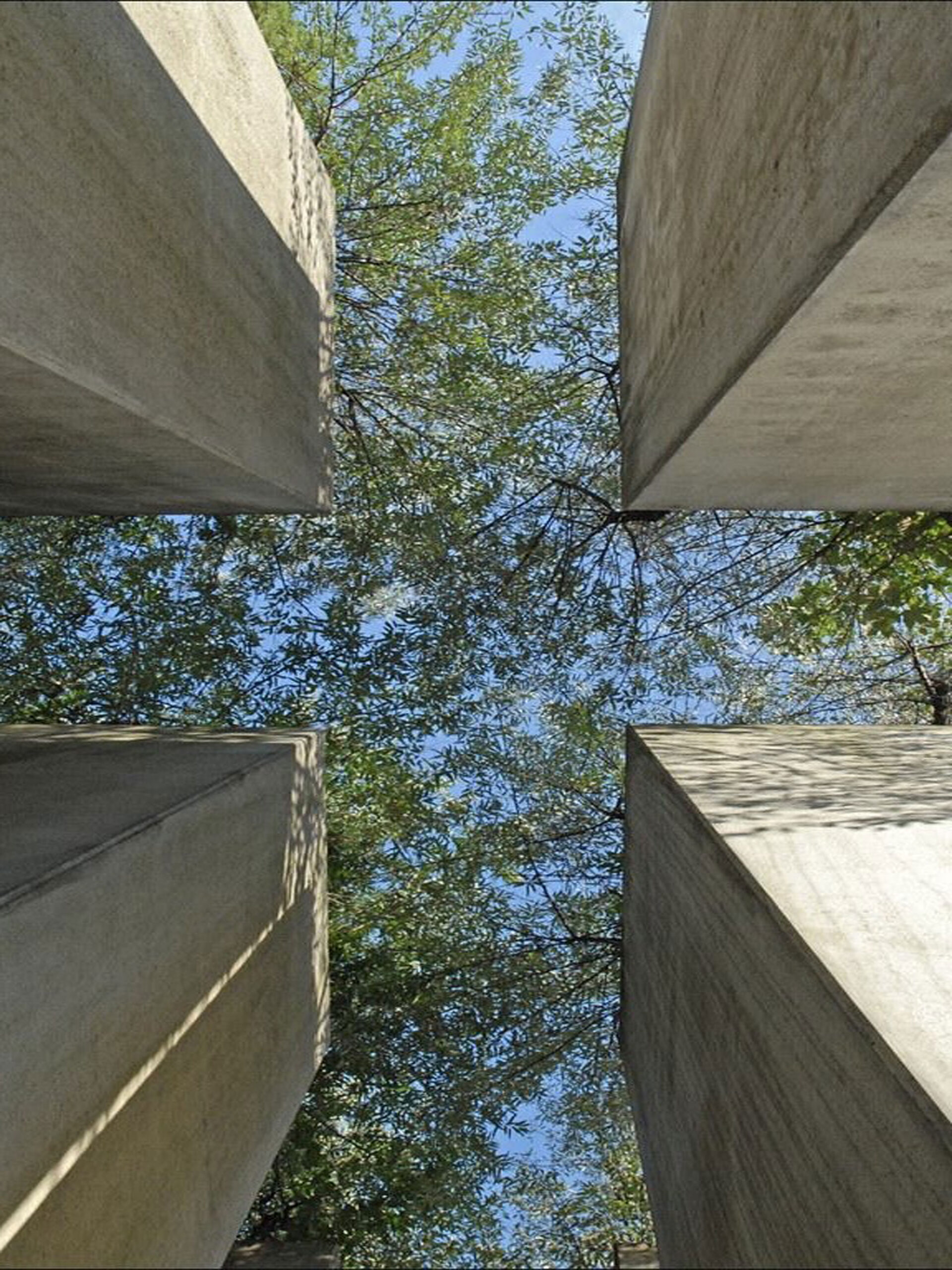
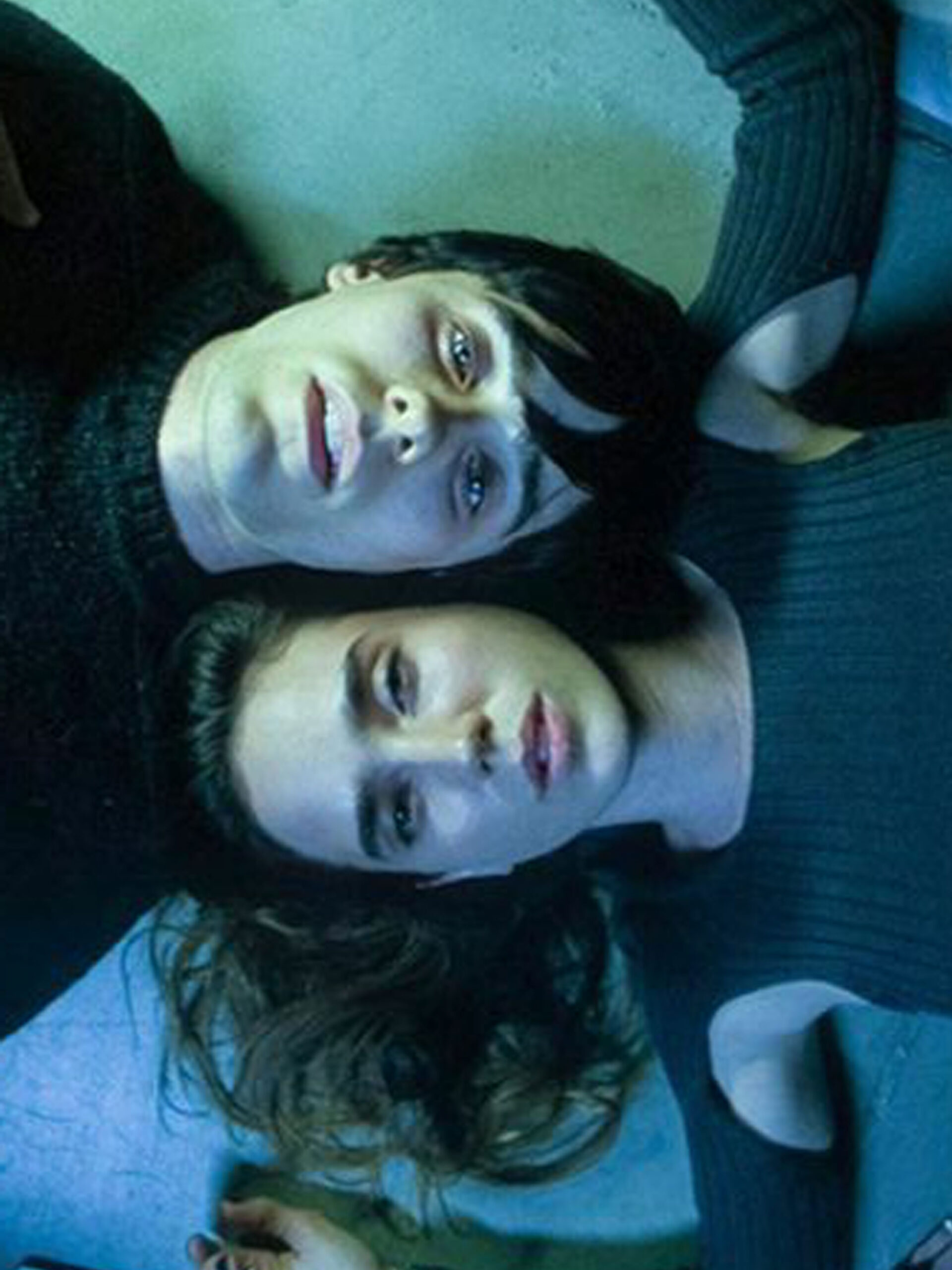
ENCLOSED
I N T E R V I E W
“I feel dizzy, or at least the impression that it is unstable and hard to move upwards, like a difficulty to move. Inside, I am completely lost and destabilized, crushed by the height and size of the big blocks, who seem to be falling on us.”
REPETITION
The Garden of Exile comprises 49 concrete pillars arranged in a grid, with a floor inclined to 12 degrees, creating a feeling of disorientation and physical instability. The pillars contain laurel plants, symbols of hope and resilience, contrasting with the rigidity of concrete. This garden evokes the uprooting and confusion of Jewish exiles, engaging visitors emotionally and physically to reflect on the tragedy of exile and the persistence of hope in difficult times.
LUX AETERNA
The music of the film “Requiem for a Dream”, “Lux Aeterna” by Clint Mansell, has a heavy and destabilizing atmosphere. It evokes a kind of fear or fear that arises when listening, similar to the sensation experienced in the middle of these huge pillars. One feels a fear of what might be hidden behind and a sense of being lost among them.
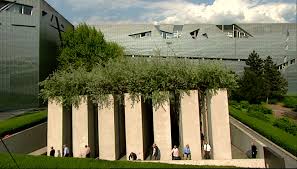
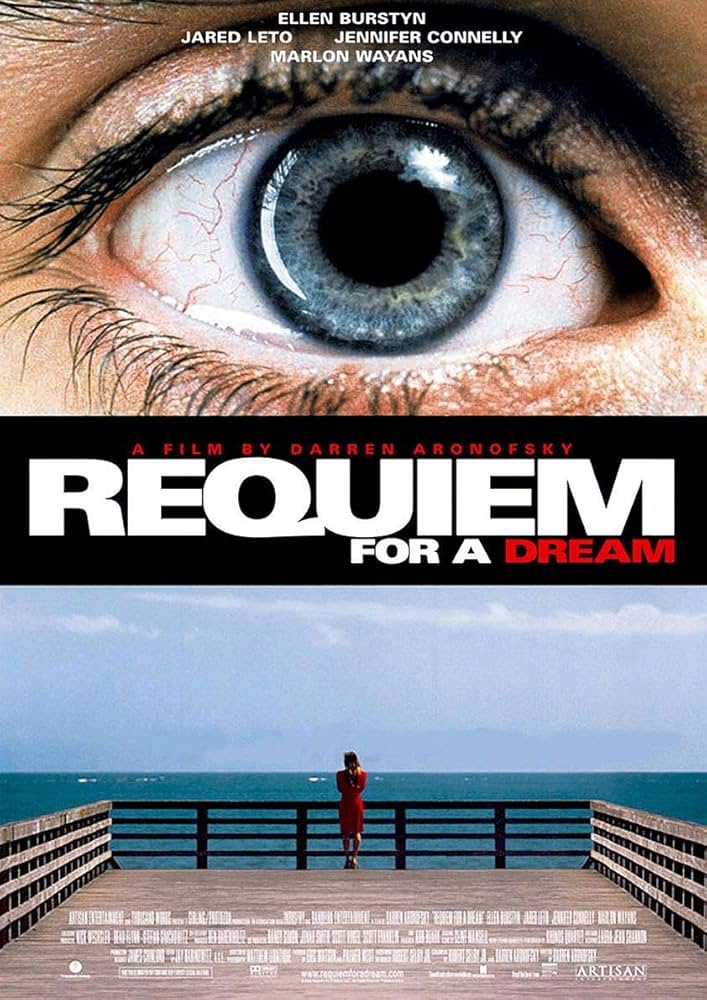
INTUITION
INTENTION
IMAGINATION
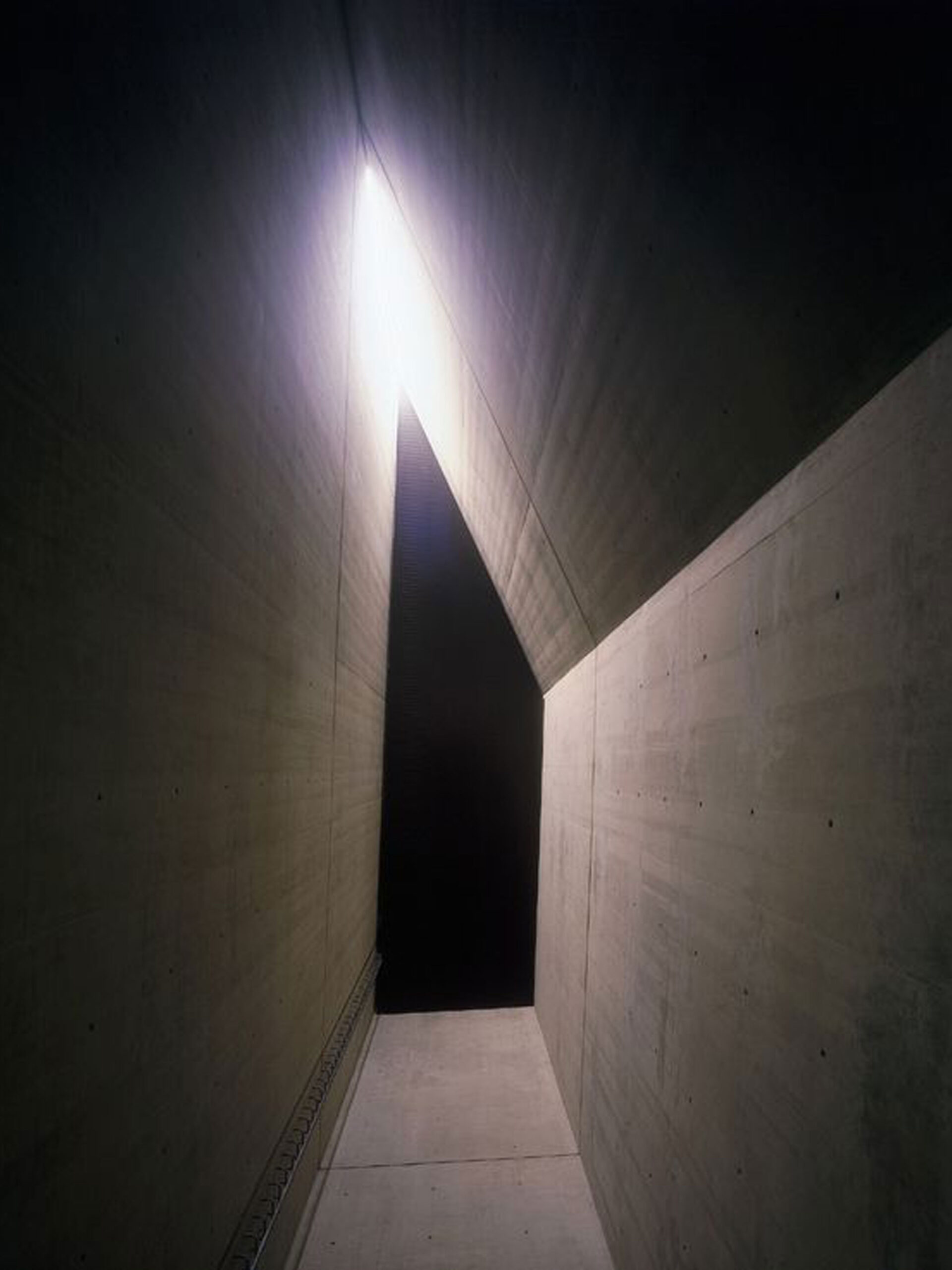
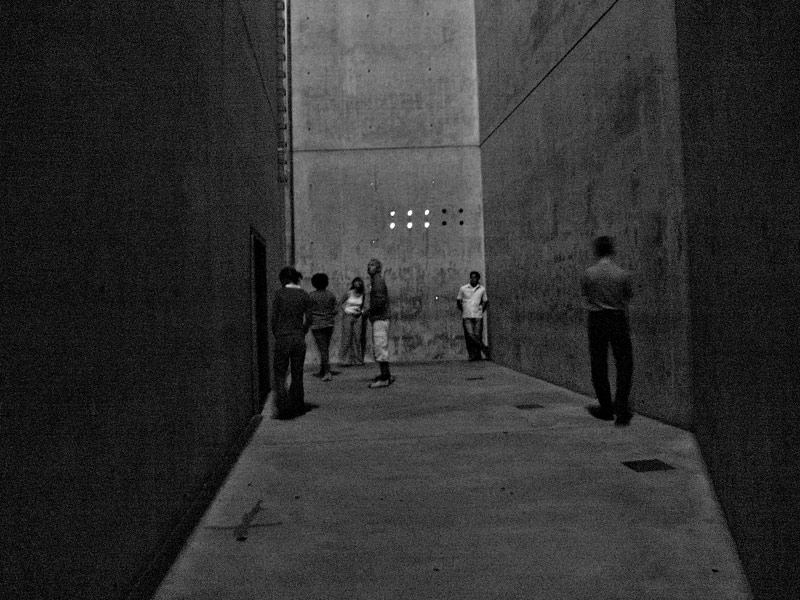
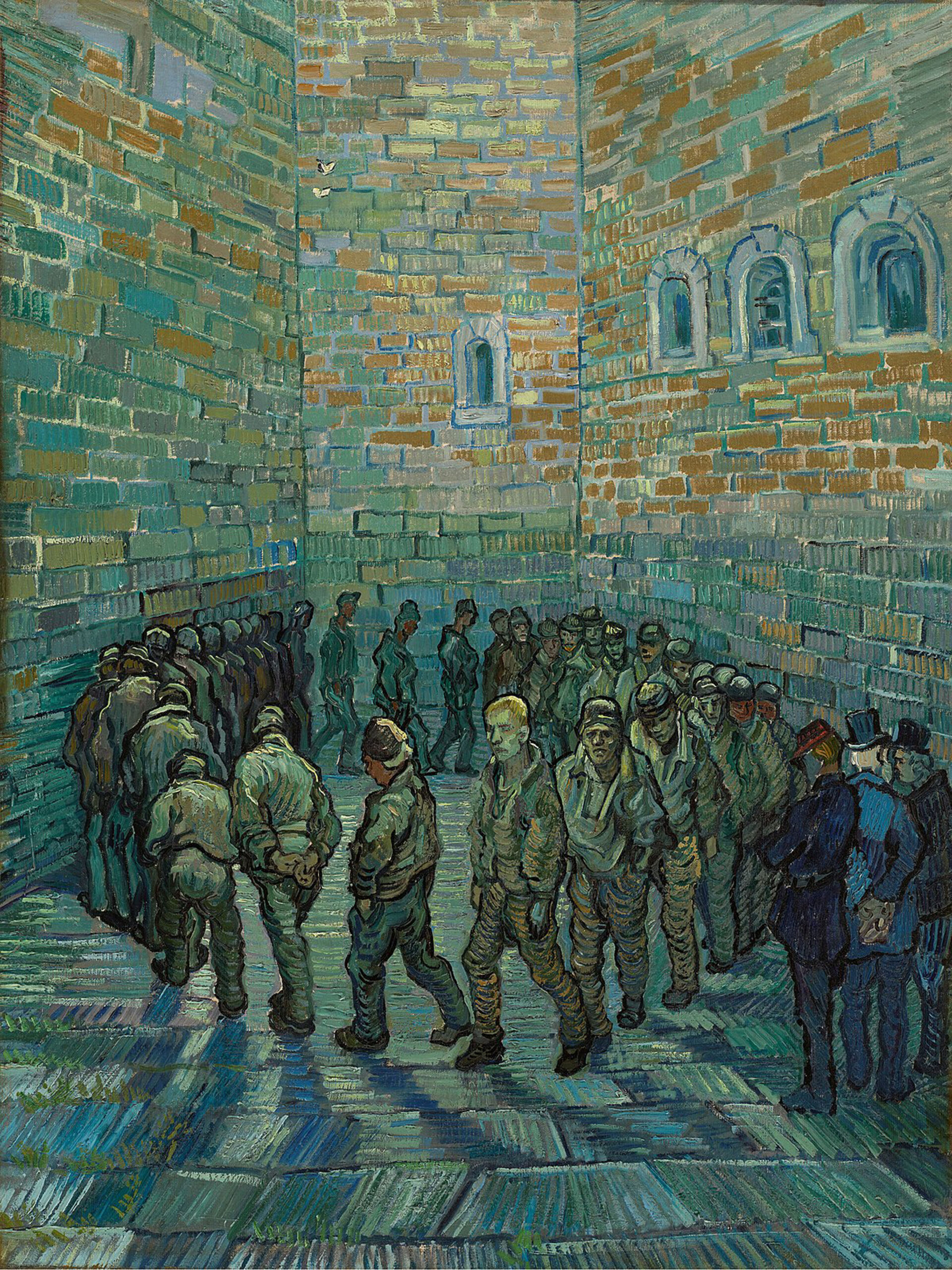
MUTE
I N T E R V I E W
“It’s cold, it’s dark, we don’t want to stay because silence is imposing. We want to stay because it’s a quiet place. As all noises are attenuated, just the sounds of traffic are heard but we no longer have the impression of belonging to the world around us, and that’s a feeling that makes you want to stay even if it is not at all attractive and does not necessarily put at ease. All the offsprings are there but are inaccessible.”
VOID
The Holocaust Tower is a tall, narrow, dark room lit only by a thin stream of light from an opening at the top. This architecture creates an oppressive and icy atmosphere, symbolizing the isolation and despair of the victims of the Holocaust. Visitors feel a deep sense of unease and claustrophobia, immersing them in a reflection on the horror and inhumanity of the Holocaust. The cold in the room reinforces this sense of despair, while the legibility of the walls emphasizes the absence of escape and the absence of any support point.
PRISONERS’ ROUND
Van Gogh’s prisoners’ round perfectly expresses the feeling of confinement without any way out, and the feeling of being forced to go in circles endlessly. The windows of the painting seem inaccessible, as does the light and scale in the Holocaust Tower. Although several people may be present at the same time in this room, it seems that it is forbidden to communicate with other visitors, thus evoking the image of prisoners who do not speak to each other in the painting.